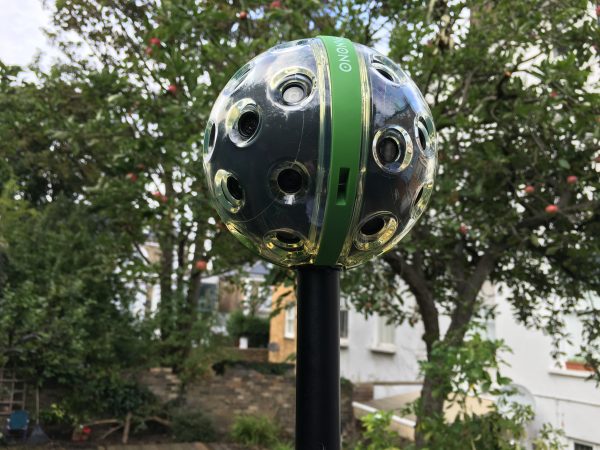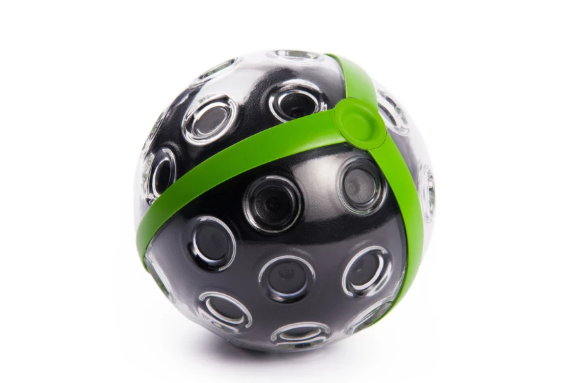Journalists are the eyes and ears on the ground when news happens. From descriptive language to photos, videos, and live video, media has evolved to adopt whatever storytelling methods can best transport our audience to the scene.
As journalists try to master VR, short scene-setting 360 shots have invaded Facebook newsfeeds and YouTube. After all, these videos work both in a headset and when panned around on a traditional screen, and it’s much faster to stitch one clip than it is to stitch 12. Audience accessibility and speed is key to fast-paced news crews, but even stitching one clip can take hours.

The Panono, a high-resolution 360 still camera, could offer a quick solution for news crews and videographers hoping to supplement their storytelling without fully committing to VR video.
The Panono camera’s claim to fame is that it is the highest resolution 360 still camera on the market today (by a factor of four, as CEO Jonas Pfeil points out). Its 36 cameras shoot 108 megapixel photos, making it possible to zoom in on details within the photo spheres with impressive clarity.
Currently, journalists from Germany’s biggest TV channel use the Panono to enhance their storytelling.
“Even though they are a TV channel and normally use video, they use the Panono for website content to show people what it’s like to be there,” Pfeil said. “It can really show what a place looks like and helps you take the reader with you.”
To take a photo, you can either press the shutter directly on the camera, use the app, or press the remote shutter button on Panono’s selfie stick. The camera can also be tossed into the air and will take a photo at the ball’s highest point. Just be sure to catch it! The camera is NOT drop-proof.

The camera stores photos on its 16 GB of internal storage, and the photos can be transferred to the Panono app over WiFi and then uploaded to Panono’s site to be processed.
Another key feature of the Panono—and 360 photos in general—is the way they can be consumed. The two dimensional images can be embedded on any site like a YouTube video and are controlled like Google Streetview.
“As opposed to video where you really need a headset, with Streetview everyone has already used that,” Pfeil said. “You can do it on any device today. A headset is optional for photos.”
Users can upload the photos to Panono’s website, or share their photos on any platform that accepts 360 photos.
The company specializes entirely on capturing still images. In fact, Getty Images used the Panono to take photos at the 2016 Olympics. Pfeil said video may be a future aspiration, but it isn’t top of mind yet.
“We always want to be the highest quality option for photo, and we won’t compromise on photo quality just to get video,” he said. “First we want our photos to be at the same resolution quality of our eyes, and that’s 500 megapixels or 1 gigapixel. When we reach that, we will probably look to do video.”
The camera is currently available for 1799 Euro plus tax and ships within 24 hours.
For more information, visit the Panono website.





